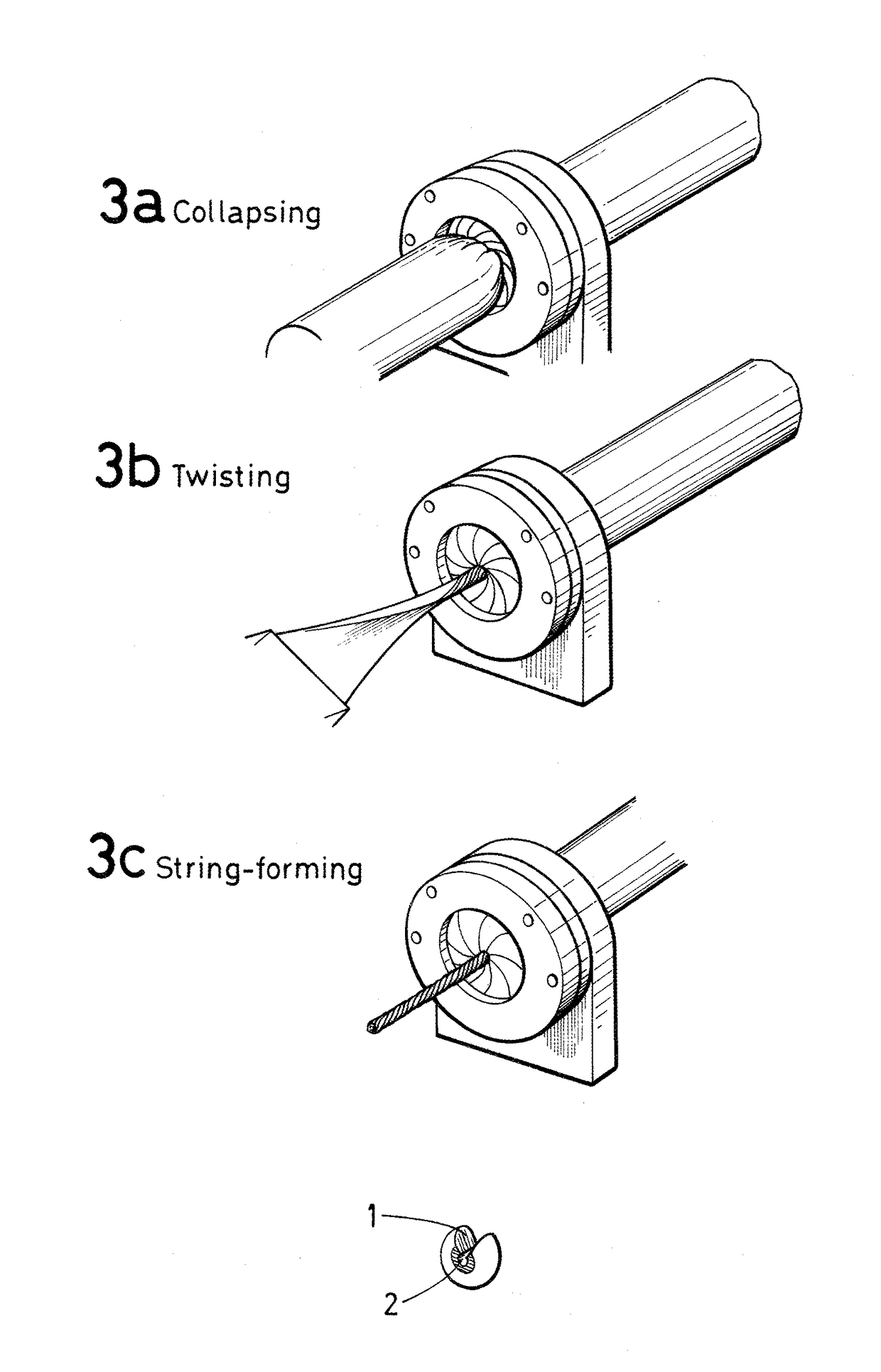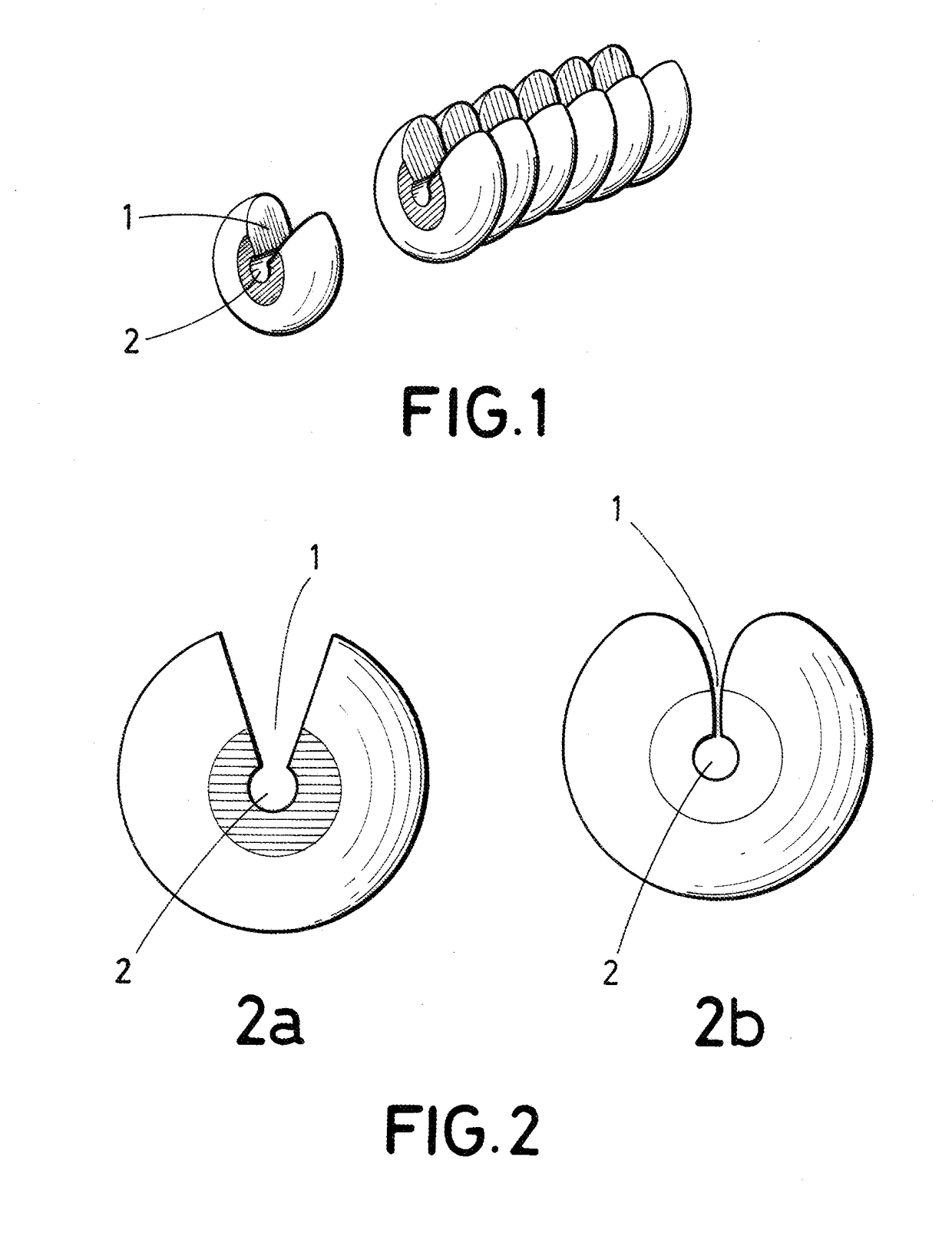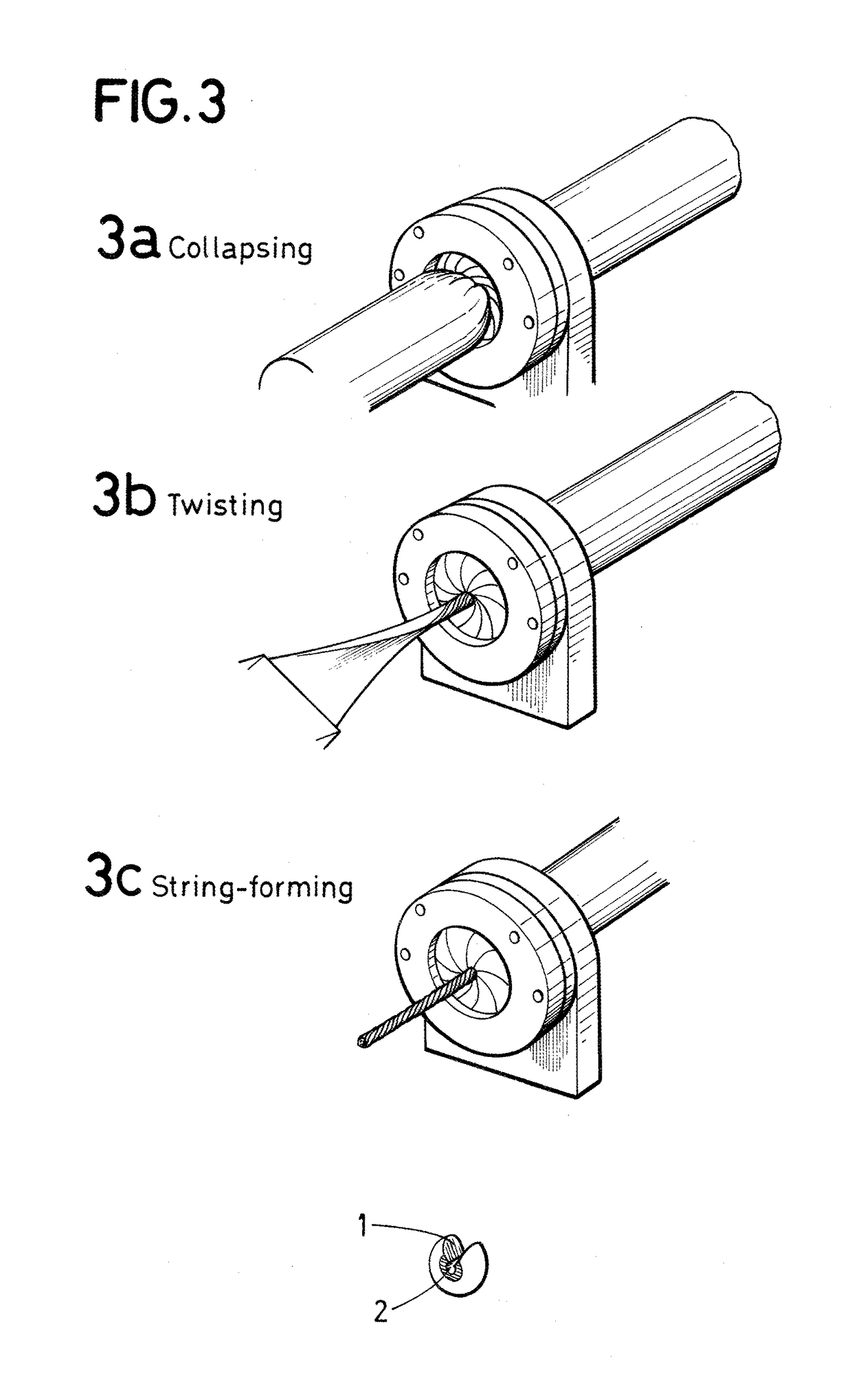End closure for an edible collagen casing and a method for obtaining thereof
a collagen and end closure technology, applied in the meat casing industry, can solve the problems of deterioration of metallic closures inside the boxes, high complexity of the machine to carry out them, and serious drawbacks,
- Summary
- Abstract
- Description
- Claims
- Application Information
AI Technical Summary
Benefits of technology
Problems solved by technology
Method used
Image
Examples
example i
on of Different Samples of the Composition
[0110]For the embodiment of the composition there has been used a food-grade gelatin dry powder of Juncá M. (Girona, Spain) of 240 to 260 Bloom, average particle size (0.3 to 0.8 mm equivalent to 20-50 mesh, in this case particularly 35 mesh), with an apparent moisture content of 13%. To obtain compositions with increased ratios Gel / Gly between 2:1 and 1:2.5 are taken in each case 100 parts of commercial gelatin with a residual water content of 13% and combined with the appropriate parts of anhydrous glycerol, yielding compositions with various contents in apparent moisture as shown in the following table:
[0111]The polyol is a food-grade anhydrous glycerin from Sigma-Aldrich. The composition is made by dissolving gelatin directly in commercial glycerol by vigorous stirring and temperatures which vary between 80 and 120 C. The resulting ratios expressed in Table X refer to the weight ratio of anhydrous pure products.
TABLE IResidualGelatineGly...
example ii
[0112]From the samples made in Example I with different compositional ratios, there are determined the thermal transitions by the technique of differential scanning calorimetry (DSC). The average results are shown in the table:
TABLE IIRatioGlycerol / GelatineTgTm2:1−29.5546.951:1−30.847.251:23.560.9Tg = Glass Transition Temperature;Tm = Melting Temperature.
example iii
on of Fluency Index
[0113]
TABLE IIINo. ofMVR averageEstándarGlycerol / Gelatinevalues(cm3 / 10 min)deviationRatio 2:1 (100° C.)8723.009.31Ratio 2:1 (80° C.)11220.288.15Ratio 1:1 (80° C.)2512.510.12Ratio 1:2 (80° C.)112.740.20load 21.6 KgRatio 1:2 (120° C.)2516.690.56load 5 KgMVR means Melting Volume Ratio.
[0114]The dramatic drop in the flow is clearly seen (and thus increasing the viscosity and therefore the cohesiveness) owing to both the variation of the ratio of gelatine and glycerol as to the lowering of the temperature applied. This gives an idea about what is the most appropriate composition for best welding performance of the fastener ring closure of the invention at the time of its execution, i.e at a relatively low environment temperature and rapid fixation of welding.
PUM
 Login to View More
Login to View More Abstract
Description
Claims
Application Information
 Login to View More
Login to View More - R&D
- Intellectual Property
- Life Sciences
- Materials
- Tech Scout
- Unparalleled Data Quality
- Higher Quality Content
- 60% Fewer Hallucinations
Browse by: Latest US Patents, China's latest patents, Technical Efficacy Thesaurus, Application Domain, Technology Topic, Popular Technical Reports.
© 2025 PatSnap. All rights reserved.Legal|Privacy policy|Modern Slavery Act Transparency Statement|Sitemap|About US| Contact US: help@patsnap.com



